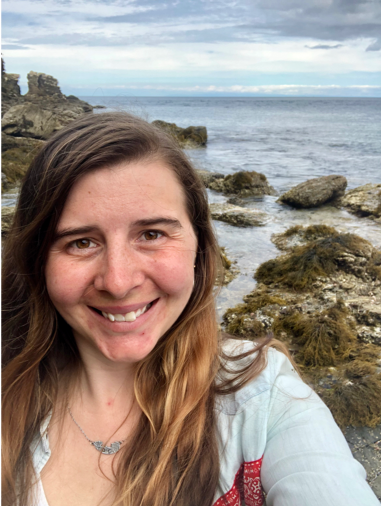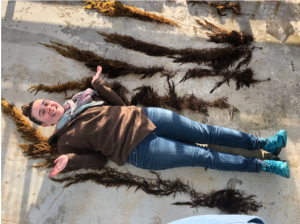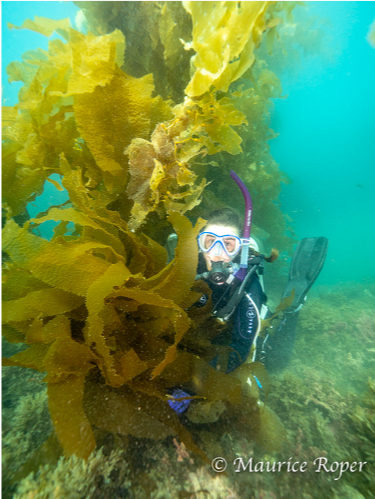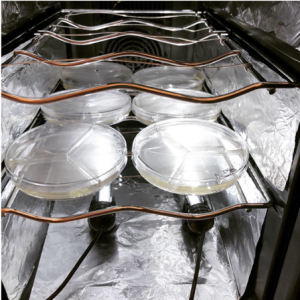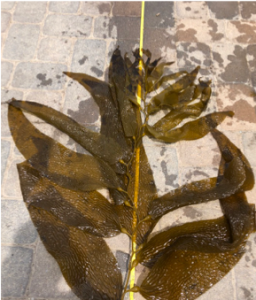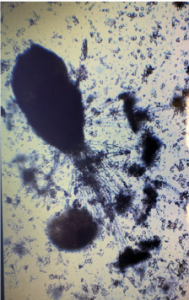"Feeling the heat: Reproductive Competition between Macrocystis pyrifera and Sargassum horneri"
A Thesis Defense by Ann Bishop
MLML Live-Stream | February 23, 2021 at 4 pm
Ann is a masters student in the Phycology and has been working under the co-advisement of Dr. Mike Graham and Dr. Diana Steller. She grew up in the forests and on the water of the Great Lakes in northern Michigan, but the lakes weren’t quite enough to satisfy her curiosity. While studying Natural Resource Management and Conservation at Colorado State University she explored policy and research in rangelands, forestry, and anthropology. This led to opportunities to study in Australia focusing on tropical ecology and how to take terrestrial research techniques and apply them to managing natural resources above and below the water. After achieving her Bachelor of Science, she crisscrossed the country working for the National Park Service as a sea turtle technician and for the Catalina Environmental Leadership Program teaching students and sharing her love of nature, ecology, and- especially- seaweed and plants. During her time on Catalina, Ann watched kelp forests on the island disappear in a matter of months and be replaced with a thicket of invasive sargassum. A desire to understand what happened to Catalina’s kelp forests drove her to pursue a masters and became the topic of her thesis. At Moss Landing Marine Labs in addition to her thesis work, she has traveled to study kelp forests in Baja Mexico and Chile, interned at the Monterey Bay Aquarium as their herbarium technician, and assisted with the marine botany course. She has also has been the curator for the MLML Research Museum, which included cataloging and caring for MLML’s historic collections, presenting at conferences on behalf of the museum and her own research, and working to develop the education and outreach side of the collection. Ann hopes to continue working where everything – research, management, outreach – is connected.
Thesis Abstract:
Off the south west coast of North America, kelp forests are facing both warmer waters and introductions of new species. This study examined how the reproductive strategies of giant kelp, Macrocystis pyrifera, and the invasive fucoid Sargassum horneri may have contributed to the interactions of these species on Catalina Island during the 2014 heatwave and 2015/16 El Niño. In 2018-2019 monthly field surveys were conducted to observe current density, demography, temporal variability of vegetative vs. reproductive biomass investment, and temporal variation in gamete release for both species. Field observations were complimented with experimental lab cultures growing M. pyrifera with and without S. horneri. The lab experiments sought to test the effect of temperature on competition between these two species at their microscopic life stages, and what role temperature plays in gamete genesis. Peaks in Macrocystis biomass occurred in summer and coincided with peaks in zoospore production, however there was only a weak correlation between individual size and zoospore production. Conversely, Sargassum biomass and reproductive output peaked between February and April when this seaweed invests heavily in reproduction before the end of its lifespan. Macrocystis produced more propagules per individual at its peak reproductive period than Sargassum. Sargassum released all of its gametes in the spring and grew quickly from the microscopic to juvenile stage. In the lab Macrocystis development was affected mostly by temperature and less by settlement density. Macrocystis sporophyte production decreased with higher temperatures whereas Sargassum zygotes developed more quickly with increases in temperature. The results and observations of this study would indicate that temperature plays a large role in the developmental success of each of these species. The unique events that preceded the record 2015-16 El Niño likely contributed to Sargassum dominating the seascape. If temperatures are anomalously high this will be exacerbated in the future if Macrocystis gametophytes are unable to complete fertilization and develop sporophytes. The high propagule production of Macrocystis and its potential for large area dispersal could provide influxes of gametophytes to deforested areas, particularly in La Niña years, regenerating these habitats. Further research focused on how high ocean temperatures impact Macrocystis resilience and kelp forest connectivity could inform how these ecological processes are changing due to climate change. This can aid in better understanding to manage the trajectory of current and future introduced species, such as invasive Sargassum horneri.


